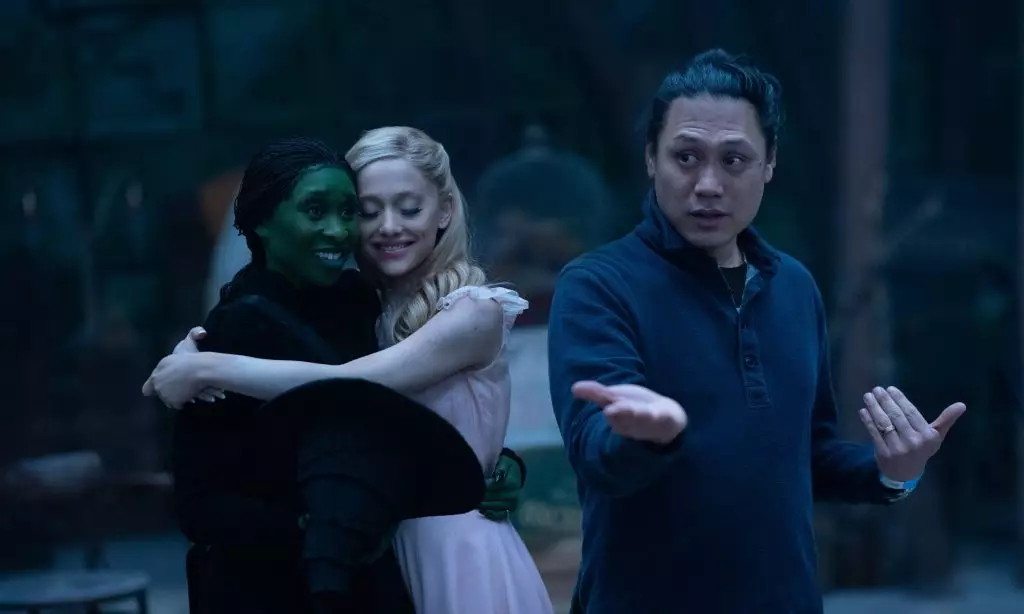The cinematic landscape has frequently returned to the enchanting setting of Oz, but the debut of Jon M. Chu’s *Wicked* seeks to redefine how audiences perceive this beloved land. While some viewers have lamented the film’s color grading, comparing it unfavorably to the vibrant technicolor of the 1939 classic *The Wizard of Oz*, Chu has strived for a vision that immerses viewers deeply into a more grounded and authentic representation of Oz. In a recent interview, he articulated that the aim was not simply to dazzle with colors but to create a world that felt real and consequential rather than dreamlike or artificial.
Chu’s motivation stems from a desire to craft an Oz that resonates emotionally with the audience. He critiques the overly slick depictions that have previously inundated the genre. “If it was a fake place… then the real relationships and the stakes that these two girls are going through wouldn’t feel real,” he noted. This emphasis on reality is particularly poignant in the context of the film’s narrative, which revolves around the evolving friendship and conflicts between Elphaba, the misunderstood Wicked Witch, and Glinda, the Good Witch. The director intended for the landscape to feel lived-in; he stated that he wants viewers to “feel the dirt” and “the wear and tear” of a world characterized not just by its magic but also by its struggles.
The ongoing conversation about *Wicked*’s aesthetic captures a larger debate within the film community. Critics on social media have voiced concerns over what they see as a “drab” palette, suggesting that the film’s tones lack the vibrancy many associate with the classic storytelling surrounding Oz. However, implementation of backlighting and deliberate choices in color saturation serve the purpose of showcasing the deeper narrative themes that unfold throughout the film. Chu aims for an evolution in the visual storytelling of Oz, one that doesn’t shy away from its darker elements.
Interestingly, the artistry of technicolor has become a relic of the past that has proven difficult—and costly—to replicate. The advancements in digital technology offer new possibilities for filmmakers but can also remove the profound emotional connection that hand-painted aesthetics inspired. Chu confronts this challenge by grounding his film in natural landscapes, utilizing the elements and lighting to evoke the authentic spirit of the land. The interplay of color throughout the film evolves in tandem with Elphaba’s character arc, highlighting her growing influence on Oz.
Despite the criticisms surrounding its visual style, *Wicked* has soared to impressive box office heights, achieving numerous milestones, including the largest global and domestic opening for a film based on a Broadway musical. This success is a testament not only to the film’s star-studded cast, featuring talents like Ariana Grande and Cynthia Erivo, but also to Chu’s distinctive vision that, while polarizing, is undeniably effective at drawing audiences in. The film’s record-breaking opening weekend, preceded by a long-awaited anticipation among fans, attests to its cultural resonance and the strength of its foundational narrative.
*Wicked* represents more than just a film—it is part of a larger trend in Broadway adaptations that reflect evolving content consumption. This adaptation narratively reinterprets Gregory Maguire’s acclaimed novel and aligns with contemporary viewing appetites that seek multifaceted storytelling. The movie explores themes of friendship, discrimination, and the gray morality of its characters, encouraging viewers to reflect on their interpretations of good and evil long renowned in the Oz legacy.
As audiences flock to theaters worldwide to witness Chu’s vision, one can anticipate that discussions about the film’s visual approach will endure. Nonetheless, the cinematic community must recognize that while color grading may evoke strong reactions, it is the storytelling that ultimately defines movie magic. The juxtaposition of stark, earthy tones against Broadway’s exuberance may serve to bridge gaps in perception—reinforcing that the essence of storytelling lies not merely in how stories are presented but in their emotional depth and connection to human experience.


Leave a Reply